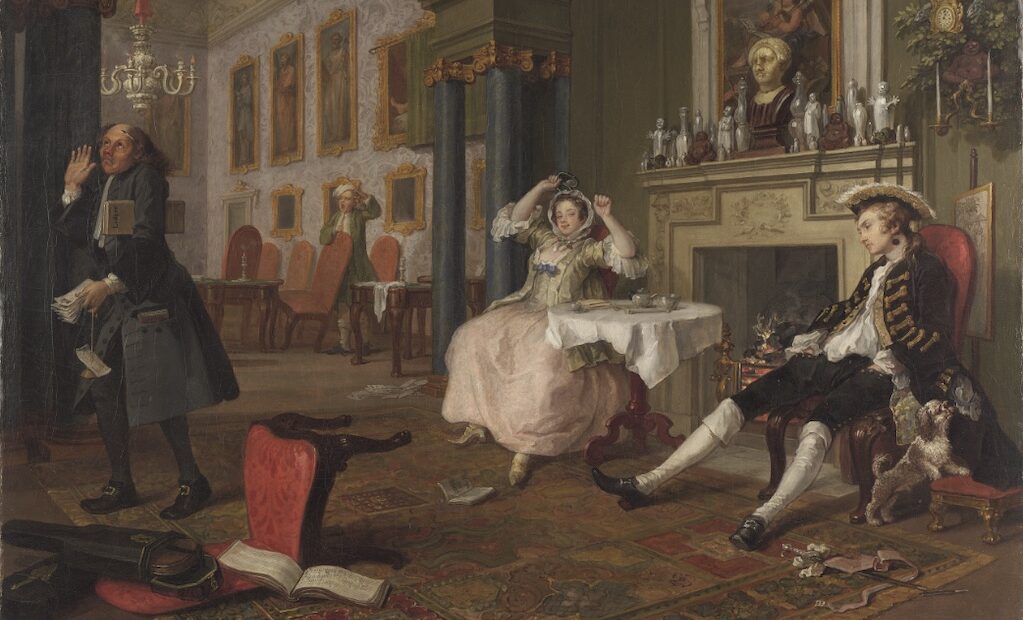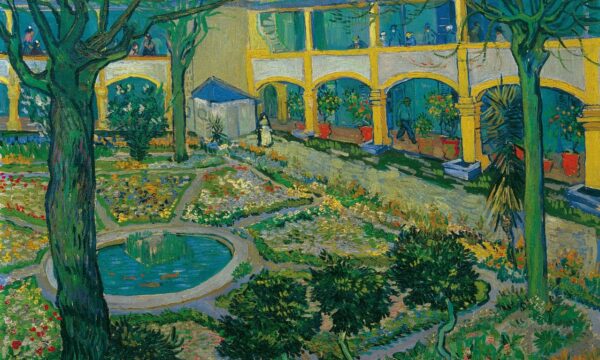Hogarth and Europe

William Hogarth (1697-1764), that great chronicler of 18th century life, achieved such renown that his name has, like Shakespeare, given rise to its own adjective. His reputation as a quintessentially English artist was carved out in a career that saw him drive his own distinctive brand of social realism and satirical take on contemporary morals into the beating heart of Georgian society. “Hogarthian” instantly brings to mind Gin Lane with its unflinching capturing of the nation’s degradation. Tate Britain’s Hogarth and Europe exhibition sets out to contextualise the Londoner in the light of European art of his time, considering the two-way exchange of artistic sensibilities between him and the rest of the Continent.
The exhibition features 60 works by Hogarth, many from private collections and galleries in the United States. Southwark Fair, for example, has not made an appearance on these shores for half a century. There’s The Gate of Calais, a satire with its greedy Catholic priest salivating over a prime cut of beef and skinny French soldiers enfeebled by their watery soup. A caption informs the public of how the artist travelled to France to find printers and was nearly arrested as a spy. Elsewhere, one finds The March of the Guards to Finchley with British troopers descending into a drunken, lecherous, violent rabble. Hogarth’s celebrated masterpieces, A Harlot’s Progress and A Rake’s Progress, appear at the Tate Britain – the artist drawing attention to the moral decrepitude of his time. Each warns against the terrible consequences of taking the wrong paths in life.
Hogarth and Europe’s curators, Alice Insley and Martin Myrone have an objective here beyond demonstrating how this celebrated Londoner drew inspiration from Europe at a time of major societal change. This, in reality, exposes the visitor to both the work of Hogarth and his contemporaries forging their careers in other thriving European cities. Some impressive pieces by the likes of Pietro Longhi in Venice, Cornelis Troost in Amsterdam and Jean-Baptiste-Siméon Chardin (whose The White Tablecloth here is particularly captivating) in Paris, are arranged around giant maps of these cities from the 18th century. The French artist Étienne Jeureat’s vivid portrayals of Parisisian street scenes, such as Arrest by the Watch (1743), reveal the extent to which he was influenced by Hogarth’s prints. The artistic cross-pollination of ideas is brought to the fore. A Plan of the Cities of London and Westminster, and Borough of Southwark; with the Contiguous Buildings (1746), by Jean Rocque and John Pine, reveals a rapidly expanding British capital that would by 1760 have become the most densely populated city in Europe. Wealthy clientele would lure the likes of Canaletto to London with his The Grand Walk, Vauxhall Gardens (c.1751) appearing at the Tate, depicting Londoners promenading in all their finery.
In terms of William Hogarth himself, the current show includes some familiar works such as Marriage A-la-Mode (1743-45) and Gin Lane (1751), whilst also introducing several exciting loans that will serve to expand the public’s knowledge of his career. Aside from the aforementioned, bawdy humoured Southwark Fair (borrowed from Cincinnati Art Museum), one finds pieces such the memorable portrait of Miss Mary Edwards (1742) (borrowed from the Frick Collection in New York) who poses in her red dress, the artist capturing her extraordinary self-possession and intellectual freedom. The Tate Britain’s final room provides plenty of examples of Hogarth’s earthy approach to portraiture with his affectionate portrayals of his sisters, Anna and Mary (from Yale) and the rather no-nonsense looking George Arnold Esq (1738-40) (from The Fitzwilliam in Cambridge).
From an artistic perspective, Hogarth and Europe has much to recommend it, particularly in the way one is offered the opportunity to view rarely accessible works by Hogarth and his contemporaries. Less appealing are the long, critical wall texts by academics and historians indicating problematic issues in Hogarth’s work. Implications are made of racism, violence and sexism; some of these can be explained away by the artist’s satirical intentions. It cannot be denied that the artist’s works need to have their symbolic meaning unravelled. His social attitudes are less than exemplary by modern standards, his jingoism now looking dated. However, there are times when commentators here could be justifiably challenged for speculative readings. Ultimately then, the exhibition is well worth a visit with tremendous work on show and yet the censorious stance adopted by the Tate and their coterie of writers can feel a little hypocritical.
James White
Hogarth and Europe is at from 3rd November until 20th March 2022. For further information visit the exhibition’s website here.





















Facebook
Twitter
Instagram
YouTube
RSS